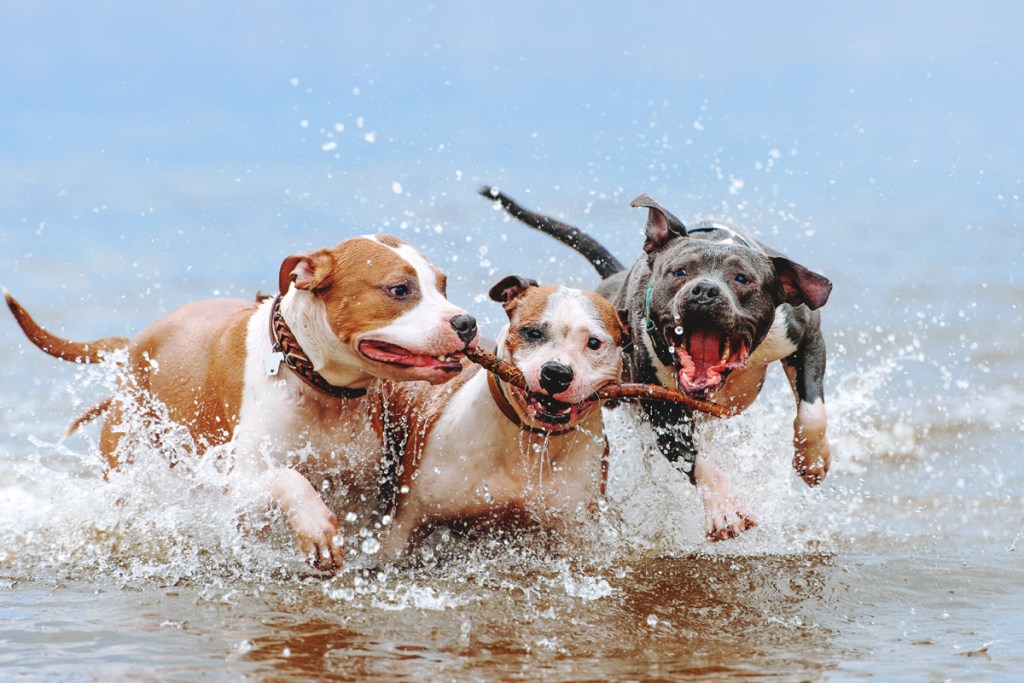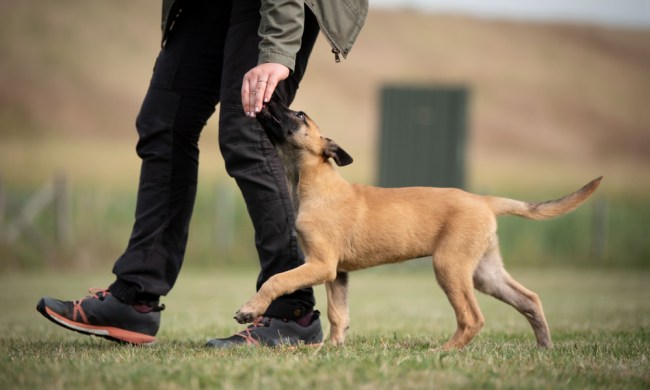How do you react when you see someone with a pit bull walking toward you? Do you quickly cross the street or pass by and comment on how handsome the dog is? Unfortunately, it’s not unusual for pet parents with loving pit bulls to experience looks of disapproval or derogatory comments when walking their pets. Sadly, this breed remains misunderstood because of irresponsible owners, sensational news stories, and myths that spread easily online. Animal welfare group Best Friends Animal Society, a Utah-based animal sanctuary that has successfully rescued and rehabilitated thousands of pit bulls, describes the breed as “wonderful family dogs.” In fact, according to the American Temperament Test Society, pit bulls score higher on tests than many other popular breeds such as golden retrievers and border collies.
What exactly is a pit bull?
Animal advocates say that one of the most challenging conversations around pit bulls is defining the breed. The American pit bull terrier is a dog breed recognized by the United Kennel Club and the American Dog Breeders Association. And while the American Kennel Club (AKC) doesn’t recognize pit bulls as a breed, several AKC-recognized breeds do fall into the pit bull class when it comes to breed-specific legislation. Those include the American Staffordshire terrier, the Staffordshire bull terrier, and the English bull terrier. Leading animal advocates say there’s no evidence to suggest that breed-specific legislation makes communities safer. The problem of dog attacks won’t be solved by quick-fix breed-discrimination laws, say ASPCA experts. Instead, animal advocates believe that dangerous-dog laws should be breed-neutral and focus on the behavior of the individual dog and owner.

How to raise a pit bull to be friendly with other dogs
Whether you love or fear pit bull terriers, the truth is, they are loving members of families throughout the U.S. Some are couch potatoes, some are high-energy agile dogs, some work as therapy or service dogs, and all of them are loyal companions. Just as with any dog breed, the key to raising your pit bull to be a canine good citizen is being a responsible pet parent. Here are some tips on how to raise a pit bull to be friendly with other dogs.
Basic obedience begins at home
You can begin basic obedience training at home by teaching “sit,” “stay,” “down,” and to come when called. Pit bulls are fast learners and, just like other breeds, respond best to positive-reinforcement training. Because pit bulls are excellent at paying attention, they do well with clicker training, a method that uses a click sound to mark a wanted behavior followed by a treat.
Early socialization is essential
According to AKC behavioral experts, a puppy’s socialization experiences in his first three months of life will permanently shape his future personality and how he will react in his environment as an adult dog. By slowly exposing your puppy to a wide variety of people, places, and situations, you’ll be helping shape him into a happy, confident, and friendly dog.
Enroll in puppy socialization classes
Puppy socialization classes are a great way to introduce your puppy to other dogs in a safe environment. The American Veterinary Society of Animal Behavior believes puppies should attend socialization classes as early as 7 to 8 weeks of age. The society’s guidelines recommend that puppies receive a minimum of one set of vaccines as well as deworming at least seven days before the first class.
Socializing an adult pit bull
It’s important to socialize your adult pit bull with other dogs at your dog’s comfort level. Introduce him carefully and slowly and make sure all play behavior is friendly and appropriate. Pit bull play can be exciting, so you should always supervise your dog and know when to interrupt and give him a chance to settle down. As with other breeds, older pit bulls might not be as tolerant of younger, more active dogs. It’s up to you to step in before the play gets too rough. If your older pit bull doesn’t enjoy being off-leash around strange dogs, training classes offer a wonderful opportunity for socializing with the help of a certified trainer. Learn to read your dog’s body language and never force him to interact with other dogs if it makes him uncomfortable.

Steer clear of public dog parks
Professional trainers tend to agree that public dog parks are not the best place to socialize dogs. While the majority of pet parents might be responsible and their dogs well trained, there are always a few who are not. Instead of going to the park, you can arrange smaller playgroups with well-mannered dogs who get along with your pit bull. And, of course, always supervise playtime so you can stop the fun if it gets too rowdy.
Remember that in addition to training and socialization, your pit bull needs between 35 and 45 minutes of vigorous daily exercise to keep him healthy and happy. You can provide mental stimulation by using a food-dispensing toy and by teaching him tricks. A calm, friendly, well-trained pit bull can serve as an ambassador and help fight prejudice and misconceptions about the breed.



